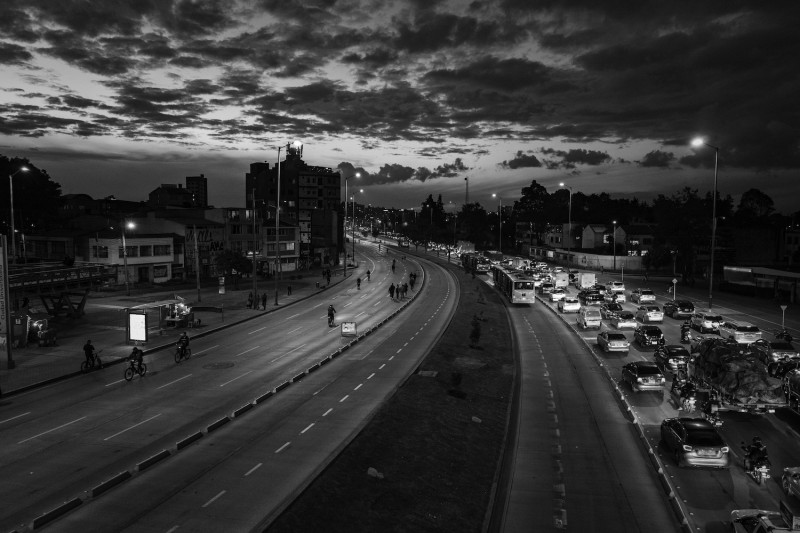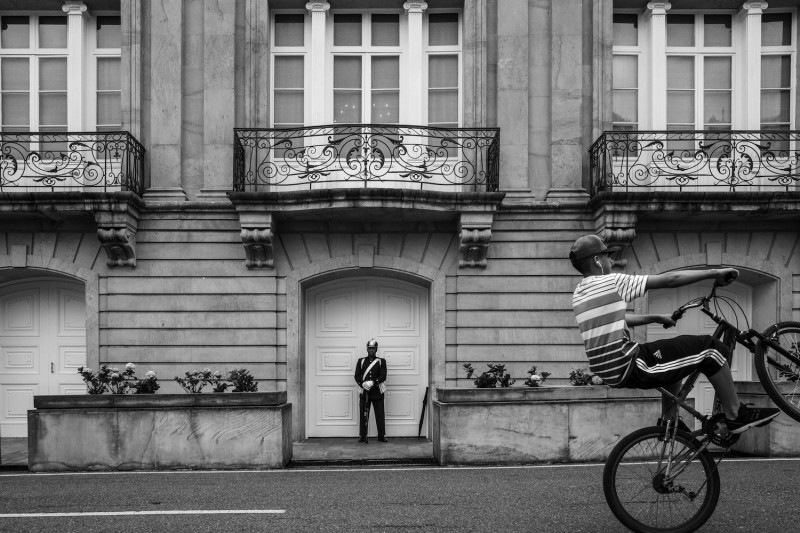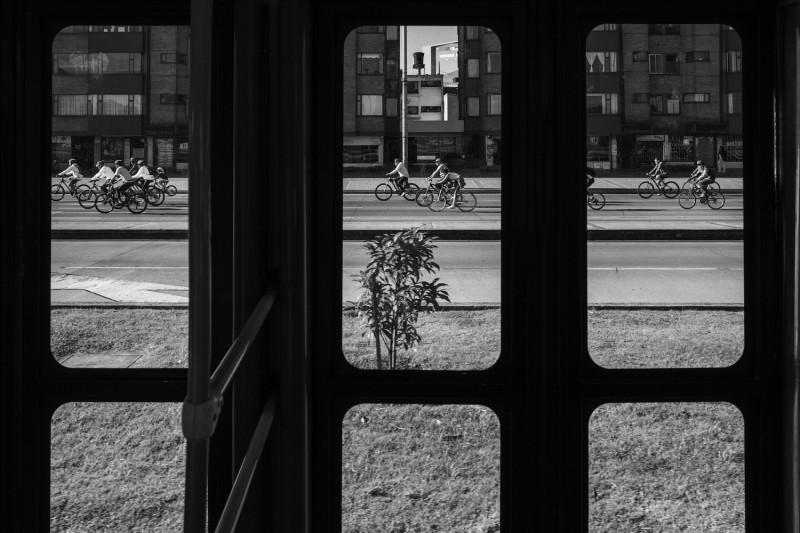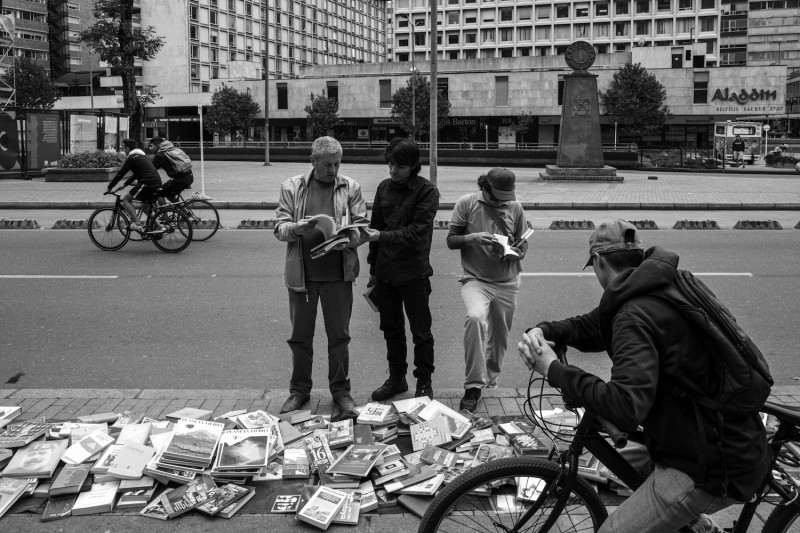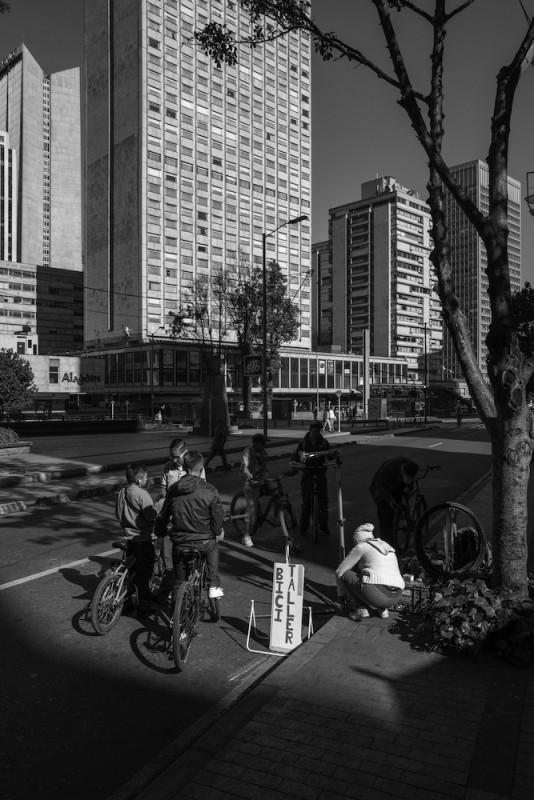Ciclovía
Ciclovía
Juan Cristóbal Cobo
July 7, 2020
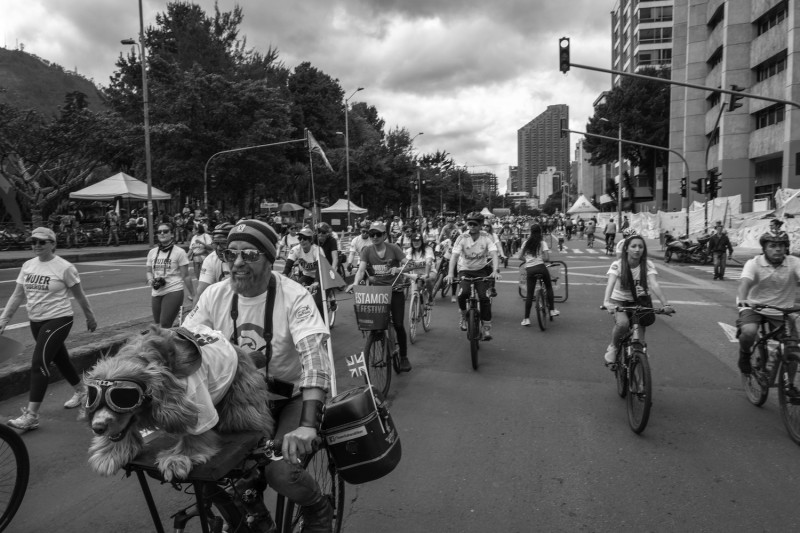
LFI: Could you describe the Ciclovía event in a few sentences? How and when did it all start?
Juan Cristóbal Cobo: For me, Ciclovía is the most democratic event in the city, where basically everyone all across town gets to enjoy a few hours of privilege over cars. People can bike, run, skate or just walk on the closed avenues that are usually bustling with traffic. It all started in 1976 as a citizens’ initiative and it has grown non-stop since then.
What exactly attracted you to take pictures of this event? For how long did you photograph it in total?
I was originally approached by an editor at National Geographic with the idea of a story about the Ciclovía, to be part of a Spring 2019 issue about cities around the world. They were curious about the event from an environmental point of view, and asked if I thought it could be of visual interest. I had never seen the Ciclovía as a subject for my photography, but then I thought I could approach it with the same style that I seek for my street work. The story was pitched and, to my delight, Sarah Leen, who was director of photography for NatGeo back then, asked if it could be done in black and white. I photographed for a period of 22 consecutive Sundays.
What fascinates you most about the Ciclovía?
It’s like a festival taking place every Sunday. It’s a release for people from the pressures of everyday life. For me, it means access – access to a free sports space, a place to release and enjoy life, and to feel a sense of appropriation of a city that is not always friendly in its everyday struggles. (Interview: Danilo Rößger)
Read the whole story in LFI 5/2020, available in print and digital form.
All images on this page © Juan Cristóbal Cobo
Equipment: Leica Q, Summilux 28 f/1.7 Asph.
Juan Cristóbal Cobo+-
Born in Colombia, the photographer moved to New York as a teenager. He first worked as a cameraman and film director, but a passion for photography finally took over. Being self-taught, he allows his technical knowledge to imbue his photographic work, combining his understanding of lighting and composition with an appreciation for stories of human interaction. More

